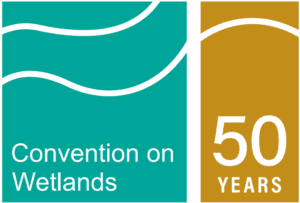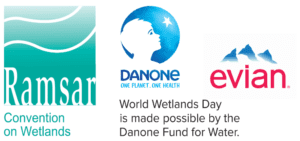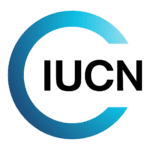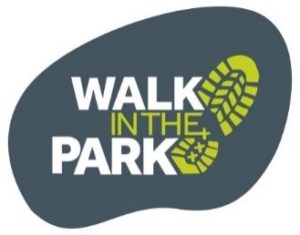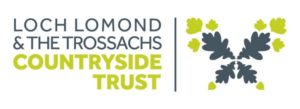European Day of Parks 2021 – Parks: The Next Generation!
The European Day of Parks is a commemorative day for Protected Areas across Europe that was launched in 1999 by the EUROPARC Federation to celebrate Protected Areas throughout Europe. It celebrates the creation of the 1st National Parks in Europe – a set of nine parks created in Sweden in 1909. Get ready for the European Day of Parks 2021 – Parks: The Next Generation!
European Day of Parks 2021: The Next Generation
Get ready to celebrate the future of Parks!
Covid-19 has, once again, highlighted Europe’s need for green spaces. The European recovery plan “Next Generation EU” promises to build a better, greener and more resilient Europe. EUROPARC is convinced that Parks and Protected Areas need to be involved in discussions about the future, and work hard on efficient solutions to ensure a safer and sustainable Europe.
So, what have you learned from the challenges that 2020 posed? And what does this mean for the future of Parks? In short; what does the next generation of Parks look like? That is what we want to discover and celebrate during this year’s European Day of Parks!
It is time to refresh and rethink what Parks offer, to adapt to new methods of communication, new infrastructures and new visitors. Of course, when thinking about the next generation of Parks, youth involvement is absolutely essential – at all levels of Parks management. After all, they are the next generation of nature professionals. However, please note that the theme “The Next Generation” is not limited to just young people! It can be new ways of working, changes in management or adaptations due to the corona crisis: feel free to get creative!
The European Day of Parks is a day to celebrate Protected Areas. Let us show the world in 2021 how Parks are continuously evolving, adapting and moving forward!
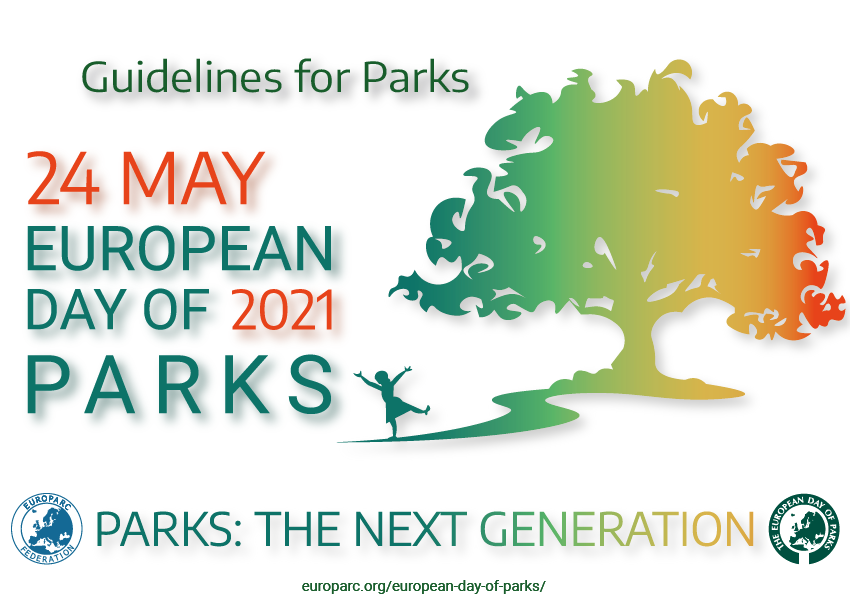
Click the image to download the guidelines for Parks. If you can’t open the links in the document, please consider using Google Chrome.
Call to action
EUROPARC always wants to highlight the important work of its members. Because this year’s celebration might partially be online again, we ask our members to send us a video message. In roughly one minute, explain what visitors can expect once they are allowed to return to your Park. What has changed? How has COVID influenced the Park? Tell us! EUROPARC will release these “In one minute” videos leading up to the 24th of May. By the way, last year’s European Day of Parks video reached almost 40.000 people on Facebook alone! So, it’s a
great way to put a spotlight on the work you are doing.
Find all info and guidelines for “In one minute” video here!
Deadline: 1st of April 2021
Organise your events
Even though, there is again a real possibility that this year’s European Day of Parks will need to take place online, last year’s edition shows us that this doesn’t stop us from raising awareness on everything that Parks are doing. Here are some ideas of events you can organise, both on- and offline.
- Adapting to new crowds: how has your Park responded to new visitors? You could start a social media campaign about good “Park etiquette” or do guided tours along new paths to distribute visitors
- Get youth involved: reach out to school or local youth groups to get them involved in your Park! Or you can let your Junior Rangers lead help organise events this European Day of Parks.
- New offers: corona has emphasized that green spaces are more than just places for nature, they are essential for human health as well. How is your Park responding to
this demand? Maybe through offering mindfulness walks or forest bathing? EUROPARC’s Healthy Parks Healthy People Europe programme can inspire you to create partnerships with the health sector.
You can upload your events here. We welcome all parks to do so, whether it is a face to face or online event: there is “strength in numbers”. Together, we can raise visibility for all Parks and Protected Areas in Europe!
Promotional material in your language
Parks are free to use the banner EUROPARC created. If your language is not included, or if you need the banner in a different format, do not hesitate to contact us under communications @ europarc.org
Albanian | Basque | Castellano | Catalan | Croatian | Czech | Danish | Dutch | English | Finnish | French | German | Greek | Hungarian | Italian | Latvian | Lithuanian | Macedonian | Norwegian | Polish | Portuguese | Romanian | Russian | Slovak | Slovenian | Spanish | Welsh
Download the European Day of Parks logo
If you are not interested in using the official posters, you can also download the logo and use it in your activities. Download contains .PNG and .eps.
About the European Day of Parks
Imagine a day when all Parks and Protected Areas come together across Europe, celebrate their successes and declare the value and benefits of Europe’s Protected Areas to communities, decision-makers and the wider public. Well, it is EUROPARC’s European Day of Parks!
Every year European Day of Parks takes place on and around 24th of May. It aims to bring people closer to nature and raise public awareness on the importance of the natural beauty preserved in Protected Areas and the importance of conservation and sustainable management of those places.
Check here to see the previous editions.
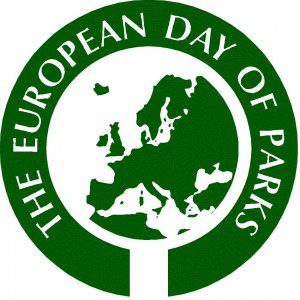
Building alliances for Natura 2000!
In March 2020 the second course of the LIFE e-Natura 2000.edu project started: “Building alliances for Natura 2000 Management”, which was led by Fungobe and EUROPARC Spain. Here you can read the experience of participant Irene Estévez, from the Lonxanet Foundation (A Coruña, Spain).
The course
LIFE e-Natura 2000.edu set out to build capacity through innovative learning tools. This innovative three-year project explores the potential of building new approaches and learning methods to improve knowledge and capacity amongst Natura 2000 Managers in both public and private land, across the EU. Taking a competence-based approach, it wants to enable peers to connect and learn about what managers need to know and be able to do. The project is led by EUROPARC, with the support of six partners.
- ProPark,
- FUNGOBE / EUROPARC Spain,
- TESAF Department of the University of Padova,
- European Landowners Organisation,
- Kullaberg Nature Reserve.
As we are slowly reaching the end of the project, we want to highlight some of the experiences the participants have made. We already published a small recap written by project leader Neil McIntosh, who took us through the strange year of 2020 and how the EUROPARC led course “Competent Inclusive Communication” fared. Now, it is time to hear from biologist Irene Estévez who followed the Fungobe and EUROPARC Spain led Course II “Building alliances for Natura 2000 Management”:
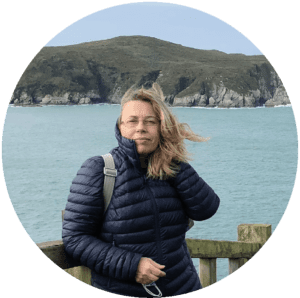
Irene Estévez
Marine alliances
My name is Irene Estévez and I am from Galicia, in Spain. I am a biologist and have worked in fisheries management for several years, especially in the co-management of the coastal maritime area in the northwest of the country. Working as a project officer in the Lonxanet Foundation, gives me the opportunity to participate in projects that help to strengthen artisanal fisheries and their communities, as well as establishing links with the fishing sector that facilitate joint proposals and projects and actions based on criteria of sustainability and social participation.
Getting to know and sharing other experiences during the course has shown us how
participatory processes, guided by the principles of governance, are the basis of good management that promotes environmental, economic, and social sustainability.
Through numerous examples we have seen how placing people, their needs, their motivations and their capacities in the center is the most adequate premise to achieve an optimal organization. And we also learned that placing ourselves in this scenario helps us to evaluate our own personal skills and to identify, throughout the course, those most necessary for our work.
“Alliances for Natura 2000” has also allowed me to share my experience in the creation, implementation, and management of Marine Reserves of Fishing interest in Galicia (NWSpain) particularly in the Marine Protected Area “Ría de Cedeira”, located in ZEC “Costa Artabra”. This gave me the opportunity to work with amazing people and be aware that appreciating local ecological knowledge, having direct contact with local stakeholders, and learning from them, is the true way to effective governance. Showing how the institution and the users can work together with scientists and collaborate with public administration and non-governmental organizations was fundamental to turning ideas and projects into real, useful schemes, beneficial for society as a whole.
My challenges as a professional involved in Natura 2000 lead me to continue worrying about the management of the marine and coastal environment. Nowadays the direct and cooperative contact between all the actors related to especially vulnerable areas and the aspects of participation and governance are still quite underdeveloped.
Therefore, this course has been a great opportunity to share knowledge, feelings, and experiences with amazing people. Even though it could not be held in person due to the coronavirus pandemic, I believe that we have managed to improve our capacities, learn new tools for effective communication and conflict resolution, and finally, continue to make progress in the effective management of our natural areas and nature 2000 sites.

Next webinar: Nature is Good Medicine – practical steps for implementing a Healthy Parks Healthy People approach
Contact with nature can deliver real benefits to people’s mental, physical, emotional and social health and well-being. COVID-19 has raised awareness of the value of Europe’s Parks and Protected areas as a setting for people to connect with nature and improve their health and well-being. At the same time, the pandemic underlines their importance in nurturing healthy ecosystems which are good for nature as well as people.
In June 2020, building on the Jūrmala Communiqué 2019, the EUROPARC Federation launched Healthy Parks Health People Europe. By encouraging the use of Europe’s Parks and Protected Areas as natural health centers, the HPHPe programme will contribute to key policy areas essential for a green recovery: improving public health and well-being and reducing health inequalities; protecting, restoring and investing in biodiversity; and responding to the climate emergency.
At this webinar, we will be launching the EUROPARC HPHPe Toolkit which aims to help those responsible for the management of Parks and Protected Areas to realise the potential of their sites as natural health centers in practice. Ways to implement the four key elements of the tool-kit – Making the case; Building partnerships; Developing capacity & practice; and Connecting people & nature – will be explored using presentations and case studies from England, Scotland and Finland.
The Webinar will be moderated by Pete Rawcliffe from NatureScot and Council member of EUROPARC Federation. Case study presenters will share their experience relating to developing Healthy Parks Healthy People projects, exploring some of the key steps in delivering on this agenda.
Case Studies
During the webinar we will look at the following case studies:
Health and Well-being in South Downs National Park
By Kate Drake and Anne Rehill, South Downs National Park, England
This session introduces delegates to the South Downs National Park in England. Anne and Kate will share the development of our Health and Well-being Strategy and how it links to our vision and priorities for the National Park. They will outline how we made the case for dedicated resources to support the work and share with you the plan they have for Health and Well-being Hubs over the next 5 years. Kate will share some early project specific work which demonstrates how the strategy will be implemented going forward.
Anne Rehill, Performance & Project Manager, South Downs National Park Authority
Kate Drake, Health and Well Being Officer, South Downs National Park Authority
The ‘Walk in the Park’ programme
By Dr Susan Warren and Fran Crumley, Loch Lomond and The Trossachs Countryside Trust, Scotland
Walk in the Park is a highly successful health walk programme, which provides weekly walks for over 250 people at six rural locations around the Loch Lomond and The Trossachs National Park. Our walks are open to all, but target people with long-term mental and physical health conditions and/or are at risk of loneliness and isolation. Managed by a small team of Health Walk Co-ordinators, the programme currently engages over 65 trained volunteers to support its delivery.
Dr Susan Warren, Transformation Director, Loch Lomond & The Trossachs Countryside Trust – Susan has 30 years’ experience working in the fields of nature conservation and community engagement. She is passionate about finding as many ways as possible to enable support people to experience the natural world to support health and wellbeing, and pro-environmental attitudes and behaviours.
Fran Crumley, Senior Health Walk Co-ordinator, Loch Lomond & The Trossachs Countryside Trust – Fran develops health walks, activities, projects and partnerships which support the health and wellbeing of communities across and close to Loch Lomond and The Trossachs National Park.
‘Nature to Action’ – rehabilitation with nature conservation
By Hannele Kytö, Parks & Wildlife Finland
Targeted engagement programmes have a crucial role in delivering HPHP in practice – nature takes care of people; at the same time through a range of volunteering activity, people can give back to nature. This case study will explore an innovative partnership project providing people at the risk of social exclusion with meaningful experiences of nature which can aid their rehabilitation into society.
Hannele Kytö – Fieldwork Manager, Metsähallitus, Parks & Wildlife Finland – responsible for the ‘Nature to Action’ programme. Innovating and developing are close to my heart and I do my very best to make people understand the importance of nature in rehabilitation.
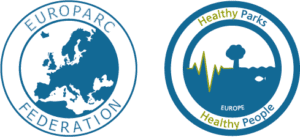
Get to know the speakers:
Carol Ritchie is EUROPARC’s Executive Director.
Pete Rawcliffe is the head of people and nature at NatureScot, a EUROPARC council member and he chairs EUROPARC’s Healthy Parks Healthy People Commission.
Anne Rehill is a Performance & Project Manager at South Downs National Park Authority in England
Kate Drake is a Health and Well Being Officer at South Downs National Park Authority, England
Dr. Susan Warren, is the Transformation Director at Loch Lomond & The Trossachs Countryside Trust. She has 30 years’ experience working in the fields of nature conservation and community engagement and wants to find as many ways as possible to enable support for people to experience the natural world to support health and wellbeing, and pro-environmental attitudes and behaviours.
Fran Curmely is the Senior Health Walk Co-ordinator at Loch Lomond & The Trossachs Countryside Trust. Fran develops health walks, activities, projects and partnerships which support the health and wellbeing of communities across and close to Loch Lomond and The Trossachs National Park.
Hannele Kytö is the Fieldwork Manager at Metsähallitus, Parks & Wildlife Finland and responsible for the ‘Nature to Action’ programme. Innovating and developing are close to her heart and she’s highly engaged to make people understand the importance of nature in rehabilitation.
Let’s celebrate World Wetlands Day 2021!
Tuesday February 2nd, marks the respectable 50th anniversary of the Wetlands Celebrations, let’s appreciate our wetlands and all they do for the planet!
The celebration
World Wetland Day is celebrated on the second of February. It is a day dedicated to raising awareness about the importance of wetlands for all life on earth. Why the second of February? Because this marks the date of the adoption of the Convention of Wetlands in 1971 – also known as the Ramsar Convention. This year’s theme “Inseparable – Water, Wetlands and Life” highlights the importance of wetlands as a source of fresh water and calls for their protection and restoration.
So – what are wetlands?
Wetlands are vital sources of biodiversity and fresh water and come in many different forms like: Lakes, rivers and swamps, peatlands, deltas and tidal flats, mangroves and coral reefs. Different forms of wetlands can be found all over the world and they are essential for the survival of countless plant and animal species as they provide habitats and breeding grounds. Humans too depend on them, as they are an essential source of fresh water.
Why should we celebrate them?
Despite their importance, the environmental health of wetlands across the world is deteriorating. Whole ecosystems are disappearing due to drainage and conversion to farmland, or because they suffer from pollution. Between 1970 and 2015, the world has lost approximately 35% of its wetlands! Its loss has been driven by climate change, population increase, urbanization, particularly of coastal zones and river deltas, and changing consumption patterns. These have all fueled changes to land and water use, and to agriculture. We are losing wetlands at an alarming rate, so on World Wetlands Day, let’s remind ourselves why these wet ecosystems are so important. For biodiversity, for people, and for the life on Earth.
In Europe, wetlands provide ideal conditions for a vast diversity of habitats and species. Crucial especially for birds, wetlands comprise vital nesting and migratory flyway areas. They are also indispensable for many other species, such as dragonflies, amphibians, fish and a huge variety of plants.
Wetlands are source of fresh water. They are also called “kidneys of the landscape”, as they work as enormous filters, providing us with water that we can drink safely. Only 2,5% of water on earth is fresh water, less than 1% is usable. Wetlands are essential suppliers of drinkable water, and therefore essential for us humans. If we do not take care of our wetlands, they won’t take care of us. That is why we need to:
- Stop destroying, start restoring wetlands
- Don’t dam rivers or over-extract from aquifers
- Address pollution, clean up freshwater sources
- Increase water efficiency, use wetlands wisely
- Integrate water and wetlands into development plans and resource management
Wetlands are our allies against climate change and for climate change adaptation. Wetlands are incredible carbon sinks:
Peatlands store twice as much carbon as forests, despite occupying only 3% of land!
Coastal wetlands like mangrove forests sequester and store large quantities of the so called “blue carbon“. This is carbon that is stored by marine and coastal ecosystems in the vegetation and sediment they grow on. Mangrove forests can store up to 10 times more carbon as the same area of “regular” forests can! Destroying these lands on the other hand, will release these amounts of carbon into the atmosphere.
Additionally, mangrove forests provide essential protection for vulnerable coastal communities. Wetlands located inland on the other hand, are able to soak up large amounts of water, reducing flooding and delaying the onset of droughts. This means, that wetlands provide many nature based solutions, both to battle, and adapt to, climate change.
Finally, wetlands are often a feast for the eyes – providing opportunities for healthy recreation and tourism.
Wetlands in Europe
Many of EUROPARC’s members are Protected Areas containing wetlands and they protect and restore these valuable ecosystems in their daily work. For example in the Cairngorms National Park in Scotland, they are working hard on restoring their peatlands. Or have a look at the newest member of our Transboundary family, Internationaler Naturpark Bourtanger Moor – Veenland, renaturing their bogs. These are just two examples of all the incredible work our members are doing to ensure a healthy future for all.
Protected Areas hold solutions to many of the problems we are facing today and they need appropriate political and financial support.
Join the celebration
How can you show some love for wetlands? On this World Wetlands Day, take part in the global celebration, learn about wetlands and spread the word about their importance so that more people appreciate and protect them! To join the online part, use hashtags #RestoreWetlands and #WorldWetlandsDay on social media or leave a short note here, explaining why you value wetlands!
World Wetland Day is spored by:
